
Giambologna, also known as Jean de Boulogne (French), Jehan Boulongne (Flemish) and Giovanni da Bologna (Italian), was the last significant Italian Renaissance sculptor, with a large workshop producing large and small works in bronze and marble in a late Mannerist style.

Cosimo I de' Medici was the second duke of Florence from 1537 until 1569, when he became the first grand duke of Tuscany, a title he held until his death.
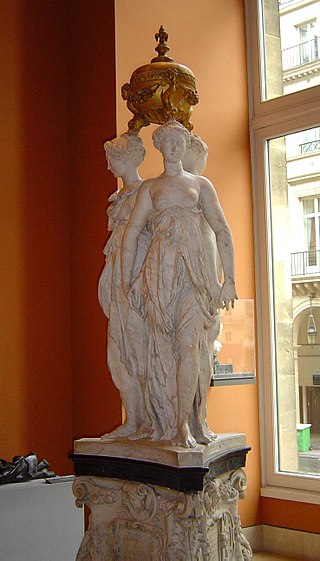
Germain Pilon was a French Renaissance sculptor.

The Loggia dei Lanzi, also called the Loggia della Signoria, is a building on a corner of the Piazza della Signoria in Florence, Italy, adjoining the Uffizi Gallery. It consists of wide arches open to the street. The arches rest on clustered pilasters with Corinthian capitals. The wide arches appealed so much to the Florentines that Michelangelo proposed that they should be continued all around the Piazza della Signoria.

Pietro Tacca was an Italian sculptor, who was the chief pupil and follower of Giambologna. Tacca began in a Mannerist style and worked in the Baroque style during his maturity.

Hercules and Cacus is an Italian Renaissance sculpture in marble to the right of the entrance of the Palazzo Vecchio in the Piazza della Signoria, Florence, Italy.
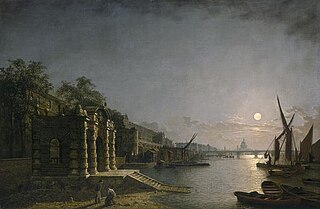
York House was one of a series of grand mansions that formerly stood on the Strand, the principal route from the City of London to the Palace of Westminster.
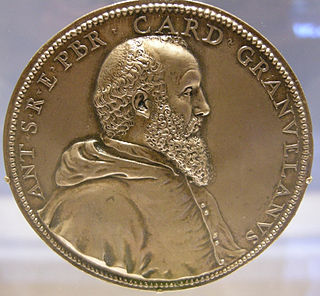
Jacques Jonghelinck was a Flemish sculptor and medallist working in Brussels in the Mannerist style common to the Catholic courts of Western Europe.

Pierre Francqueville, generally called Pietro Francavilla, was a Franco-Flemish sculptor trained in Florence, who provided sculpture for Italian and French patrons in the elegant Late Mannerist tradition established by Giambologna.

The Crouching Venus is a Hellenistic model of Venus surprised at her bath. Venus crouches with her right knee close to the ground, turns her head to the right and, in most versions, reaches her right arm over to her left shoulder to cover her breasts. To judge by the number of copies that have been excavated on Roman sites in Italy and France, this variant on Venus seems to have been popular.

Pierino da Vinci, born Pier Francesco di Bartolomeo di Ser Piero da Vinci, was an Italian sculptor, born in the small town of Vinci in Tuscany; he was the nephew of Leonardo da Vinci.
Samson was a character in the Biblical Book of Judges. He is said to have been raised up by God to deliver the Israelites from the Philistines. In the story, God grants him unusual strength, which is facilitated by a Nazirite vow prohibiting him from cutting his hair. His strength and violent temper are illustrated in several colorful stories portraying him as dominant over man and nature. He also succeeds in his charge to battle the Philistines, more through acts of personal vengeance than by any formal military strategy. Eventually the Philistines defeat him by bribing his new love interest, Delilah, into extracting from him the secret to his strength. Once learned, the Philistines cut his hair while he sleeps, at which point he is easily defeated.

Hercules, Samson and Ulysses is a 1963 Italian Metrocolor peplum film directed by Pietro Francisci.

Female Figure is a near life-size 16th century marble statue by the Flemish sculptor Giambologna. It measures 114.9 cm and depicts an unidentified woman who may be Bathsheba, Venus or another mythological person. The work dates from 1571 to 1573, early in the artist's career, and has been held by the J. Paul Getty Museum since 1982. The woman is nude save for a bracelet on her upper left arm and a discarded garment covering her lap. She sits on a column draped with cloths, holding a jar in one hand, drying her left foot with the other.

The Palacio de la Ribera was the summer residence of Philip III in Valladolid. It was built in the 17th century (1602-1605) as part of a process of urban transformation upon the establishment of the Spanish Court in Valladolid between 1601 and 1606. The palace was situated at the Huerta del Rey neighborhood, located across the Parque de las Moreras on the right bank of the Pisuerga river. The palace grounds extended from the Puente Mayor to Ribera de Don Periáñez del Corral and delimited at both sides by the Pisuerga river and the Camino del Monasterio del Prado. The palace was gradually abandoned until it became part of the destroyed cultural heritage of Valladolid in 1761. Some ruins of the building are still preserved.
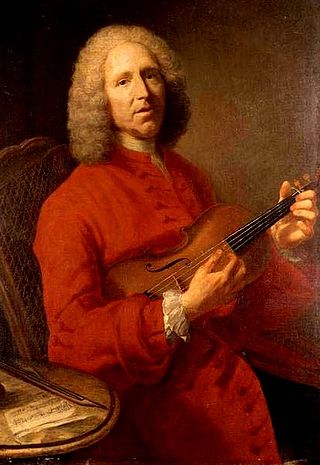
Samson was an opera by the French composer Jean-Philippe Rameau with a libretto by Voltaire. The work was never staged due to censorship, although Voltaire later printed his text. Rameau intended the opera on the theme of Samson and Delilah as the successor to his debut Hippolyte et Aricie, which premiered in October 1733. Like Hippolyte, Samson was a tragédie en musique in five acts and a prologue. Voltaire had become a great admirer of Rameau's music after seeing Hippolyte and suggested a collaboration with the composer in November 1733. The opera was complete by late summer 1734 and went into rehearsal. However, a work on a religious subject with a libretto by such a notorious critic of the Church was bound to run into controversy and Samson was banned. An attempt to revive the project in a new version in 1736 also failed. The score is lost, although Rameau recycled some of the music from Samson in his later operas.

The Bathing Venus is a large bronze sculpture attributed to Giambologna (1529-1608), the leading late Renaissance sculptor in Europe. Archival documents suggest that it was presented to King Henri IV of France with other bronzes as a diplomatic gift from Ferdinando I de’ Medici, Grand Duke of Tuscany, to embellish the gardens of the Royal castle in Saint-Germain-en-Laye. Giambologna's Triton in the Metropolitan Museum of Art and a Mercury in the Louvre were likely to have been also part of this grand-ducal gift. The bronze Venus is a second, remodelled and rethought version of a marble Venus, the so-called Bathsheba, by the same artist, which, after its rediscovery, entered the collections of the J. Paul Getty Museum in 1982. The bronze Venus reappeared around 1960 in the possession of a scrap-metal dealer near Paris, who seemed to have obtained it from the Château de Chantemesle in Corbeil-Essonnes (Île-de-France), which had been demolished in the same years. After having been first described as a Swedish late 17th century aftercast of the Getty Venus, the bronze is today internationally recognized by leading scholars as an autograph work by Giambologna. The German expert for Florentine sculpture Nicole Hegener considered the rediscovery of the bronze Bathing Venus as “the kind of sensation that occurs only once a century”.

Florence Triumphant over Pisa is an Italian Renaissance sculpture by Giambologna, existing in two versions, as well as a small wax modello. The first is a full-size modello in gesso (plaster) executed in 1565, still in the Palazzo Vecchio Florence, for which it was created. The Victoria and Albert Museum in London has a small wax study, and a small model in clay.
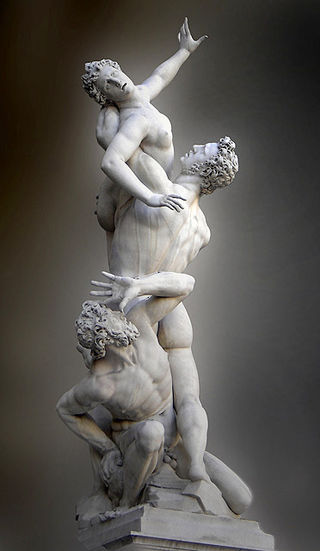
Abduction of a Sabine Woman is a large and complex marble statue by the Flemish sculptor and architect Giambologna. It was completed between 1579 and 1583 for Cosimo I de' Medici. Giambologna achieved widespread fame in his lifetime, and this work is widely considered his masterpiece. It has been in the Loggia dei Lanzi, Florence, since August 1582.

Italian Renaissance sculpture was an important part of the art of the Italian Renaissance, in the early stages arguably representing the leading edge. The example of Ancient Roman sculpture hung very heavily over it, both in terms of style and the uses to which sculpture was put. In complete contrast to painting, there were many surviving Roman sculptures around Italy, above all in Rome, and new ones were being excavated all the time, and keenly collected. Apart from a handful of major figures, especially Michelangelo and Donatello, it is today less well-known than Italian Renaissance painting, but this was not the case at the time.






















